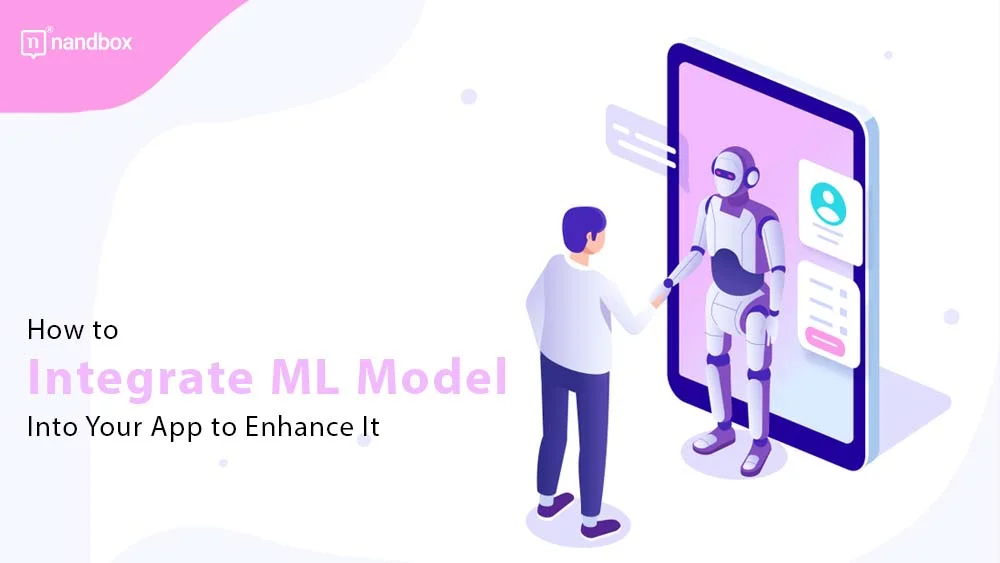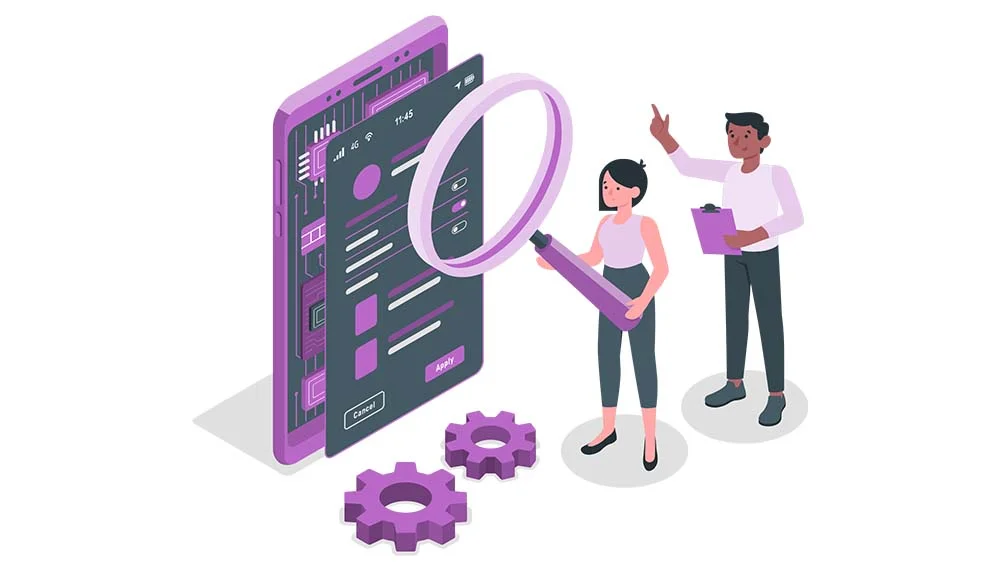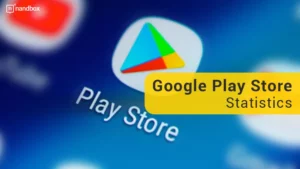We, humans, will always aspire to let machines and technological systems understand us seamlessly. It’s scary, I know, but what if it has great benefits? What if we could actually deploy such technology on our side? This is exactly what we’re about to explain and dive into more. In this article, we’ll discuss how to integrate an ML model into your no-code app in an easy and detailed way.
What Is Machine Learning (ML) And How Can You Implement It in Your No-Code App?
No-code Machine learning (ML) platforms use visual drag-and-drop platforms so that you don’t have to write a single line of code to build models and make predictions. These systems automate the procedures for gathering data, cleaning it, choosing models, training them, and deploying them. No codes Machine learning is made accessible by ML. It lets business analysts who don’t know much about machine learning or programming make machine learning models and make predictions to solve urgent problems, like figuring out when goods will be delivered or when customers might leave. Why are they important? Let us answer that. By bridging the gap between humans and technology, No Code ML gives business analysts access to automated machine learning so they can make predictions.
Traditional ML vs. No-Code ML: What Is the Difference?
With traditional ML, a proficient data scientist creates an ML model using a programming language like Python. To get the data ready for machine learning, data scientists must combine datasets and use both manual and automated methods to build features and clean the data. Before putting their model into production, they must choose a subset of the data to use for training and fine-tuning.
A no-code platform, on the other hand, combines advanced machine learning programming with easy-to-use tools that business users can use to make ML models.
AutoML and ML modeling are identical and share no code. AutoML is a method for streamlining traditional ML procedures. Typically, AutoML uses automated procedures to discover acceptable algorithms and automates data preparation. The main difference between AutoML and no-code ML is that you don’t need to be a data scientist to use no-code ML, but you do need to be a data scientist to use AutoML.
Steps to Integrate ML Model Into Your No-Code App
Integrating machine learning models into your app can enhance its functionality, providing more accurate and personalized results to users. However, the process of integrating ML models can be daunting for developers without prior experience in this area. In nandbox, we aim to provide a comprehensive overview of the essential steps involved in integrating an ML model into your application.
Choose the Right No-Code Platform
Before integrating a machine learning model into your no-code app, it’s important to choose the right platform that supports this integration. Make sure the platform has a way to import and use outside tools like APIs, which will let you connect to the machine learning model. Also, look for a platform that offers drag-and-drop tools for building UI components that interact with machine learning predictions. Some popular no-code platforms that support integration with machine learning models include nandbox, Bubble, Adalo, and GoodBarber. If you choose the right platform for your needs, you’ll be one step closer to integrating your machine learning (ML) model into your no-code app without any problems.
Train and Deploy Your ML Model Before Integrating it into Your App
Once you have chosen the right platform for integrating your machine learning model, the next step is to train and deploy it. The training process involves feeding your ML model with the data it needs to learn how to make predictions. This requires large amounts of high-quality data that accurately reflect your app’s use case. You can gather this data by pooling data from different sources or by collecting new data through user interactions in your app. After training, deploy the model to a cloud service that supports API integration. This will let you use an API connection to bring the trained model into your no-code platform and use its predictions in your app.
Prepare Your App for Integration
Before adding a machine learning model to your no-code app, it’s important to get your app ready to make sure the addition goes smoothly. This means figuring out the exact use case for which you want to use the model and making sure that your app’s input and output data structures match the model’s needs. You may need to make some changes to your app’s interface or back-end architecture so that data can flow smoothly between the ML model and your app. Also, it’s important to test your app carefully before and after integration to make sure everything works as it should. By following these steps, you can add a machine-learning model to your no-code app and make it work better.
Connect and Integrate Your App to the ML Model
Once you’ve prepared your app, the next step in seamlessly integrating an ML model is to connect it to your app. One way to achieve this is by using an application programming interface (API) provided by your machine learning platform. This API will act as a bridge between your app and the ML model, allowing them to communicate with each other without any compatibility issues. You can also use third-party integration tools like Zapier or IFTTT to connect your app with the machine learning platform’s API. It’s important to test the connection thoroughly before moving forward, as any errors could lead to unexpected behavior in your app. Connecting your app to an ML model can make it much more useful and expand its capabilities if you plan and do it well.
Test, Monitor, and Optimize Your App’s ML Model
When adding an ML model to your no-code app, it is important to test, monitor, and optimize. Once you’ve added the machine learning model to your app, it’s important to test how it works in different user situations. This will help you identify any potential bugs or errors and address them before launching the updated version of your app. Moreover, it’s important to keep an eye on the performance of your app after it’s been built. You can do this by tracking metrics like user engagement, response time, and how accurate the machine learning model is. By analyzing these metrics, you can optimize the integration for better results over time. Remember that testing and optimization are ongoing processes and should be done periodically to ensure the smooth functioning of the ML model within your no-code app.
Why You Should Leverage No-Code ML Tools?
No-code ML can be used to respond to time-sensitive inquiries. For example, marketing analysts can use no-code ML to evaluate sales leads and predict which ones have the best chance of being turned into sales. Machine learning is not used by financial experts to predict revenue growth or figure out how risky it is to work with a new client. Logistics analysts can use ML models to find the best routes for shipping, and production analysts can use no-code ML to predict manufacturing capacity limits.
nandbox and How We Can Help You With Your ML No-Code Integrations
With our native no-code app builder, you needn’t worry about any programming hassles. We took care of all the ML training for you. Want to build an application but don’t know how to bring your idea to life? No problem, we’ve got you! With our no-code native app builder, you can simply drag-and-drop your desired features (we have a lot of those, BTW), and voila! you’ll have an app within a very short period of time. There is no need for prior knowledge of any coding or programming languages. Simply choose your template, start the branding and development process, and then publish your app on the Google Play Store for Android, the Apple App Store, or both.








